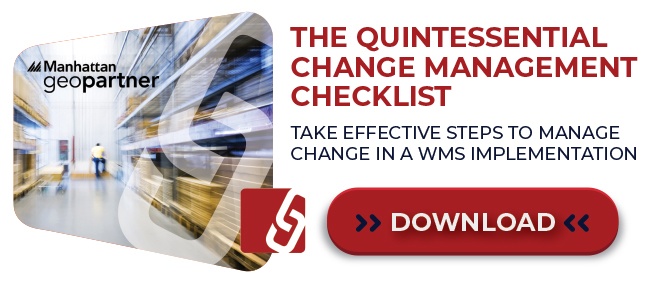What makes a successful omnichannel experience?

.png?width=900&name=Untitled%20design%20(8).png)
With so many moving parts, a true omnichannel customer experience can be a difficult thing to get right. Here’s a few expert tips to help you achieve omnichannel success in your business.
The retail landscape has changed and if your brand can’t keep up with increasing customer demand, you’re in for trouble. “People don’t just shop in-store… even when they’re inside a store,” writes Shopify, e-commerce software provider. In fact, most people will actually refer back to their online research while in store - checking the specs and details of the products they’re considering.
There’s very little differentiating one product from another these days when it comes to quality and functionality. The bottom line is: modern buyers are looking for exceptional customer service. This is often the deciding factor when it comes to making a purchase. Brands that can’t offer a seamless customer journey will struggle to generate loyal customers and repeat business.
Enter omnichannel: the best way to ensure your brand maintains a competitive edge. In the following article, we’ll look at defining omnichannel, why it’s important for your business and how you can successfully implement an omnichannel strategy in your supply chain.
What is an omnichannel customer experience?
Omnichannel is an integrated approach to sales, which ideally creates a seamless customer experience.
Omnichannel ensures multiple touchpoints for the customer to connect with your brand. It's vital that all of your departments work together to run an efficient warehouse and business.
“A good omnichannel experience is like a Philharmonic Orchestra. You’ve got different sections, all with an essential role. Separately, each section can play and sound beautiful but if they are not in-sync with each other, your night at the opera will quickly become a royal mess and you won’t make it to the interval.
When a conductor takes control, they bring all the strands together to tell the composer’s story. The sections will not be playing the same notes, but they will all be reading off the same page, complementing one another and working in harmony. Replace musical instruments with retail channels, and you’ve got omnichannel,” writes IMRG, the UK’s online retail association.
The difference between multi channel and omnichannel
There’s no formal, text-book “difference” between the two strategies. However, all omnichannel retail experiences use multiple channels, but not all multi channel retail experiences are omnichannel.
We don’t blame you if you’re feeling a little confused right now.
Let’s examine the terms “multi” versus “omni”. The definition of multi is “more than one” while the definition of omni is “all”. So omnichannel translates to all channels while multi channel translates to more than one channel. This means that a multi channel experience could comprise of only voice and email customer support - more than one channel, but certainly not all of them.
Omnichannel, on the other hand, includes everything from email, voice and web support, to social media and mobile support. The customer should be able to get support from whichever channel they prefer - whether that’s via email, phone call or a Tweet or a mention on Facebook.
Why is an omnichannel strategy important?
Customers who have the ability to convert on any channel have a 30% higher lifetime value, according to an IDC study. In another study, Harvard Business Review conducted a survey on 46,000 shoppers, to determine to what extent omnichannel impacted their retail experience. The results showed that:
- 7% shopped online exclusively
- 20% were store-only shoppers
- 73% used multiple channels
If your business doesn’t have an omnichannel strategy in place, you could be creating a frustrating experience for up to 73% of your potential customers.
The benefits of an omnichannel retail strategy
In essence, omnichannel places the customer at the centre of your business strategy. This has various benefits for both the customer and the business, including:
- Accurate inventory management
- Access to real-time reporting
- Increased sales and revenue
- Improved warehouse productivity
- Increased customer satisfaction and retention
- Bolstered brand perception and reputation
“An omnichannel business blends all channels to make a customer’s user experience personalised, seamless and relevant at each touchpoint. Omnichannel strategy benefits both customer and business, with businesses implementing a strong omnichannel strategy retaining on average 89% of their customers and an increase in their annual revenue by an average of 9.5% year on year”, writes IMRG, the UK’s online retail association.
How to create a successful omnichannel experience
An omnichannel retail strategy requires your sales and distribution departments to work together efficiently. Sadly, this is often where things start to go wrong.
Common omnichannel challenges (and how to overcome them)
The top four omnichannel challenges (or barriers to an exceptional omnichannel experience) include:
1. First mastering multi and cross-channel communication
Before you try to tackle a full omnichannel experience, businesses need to ensure that they’ve mastered and are delivering a consistent multi channel experience. Why? Because consistency is key when it comes to mastering omnichannel.
Customers should experience seamless interactions with your brand. This means never having to repeat information they’ve already given between departments or channels (e.g. switching from phone call to email), and being able to get support from whichever channel is most convenient.
Making sure you can deliver a seamless experience over two or three channels before throwing several others into the mix will help make the transition to omnichannel less daunting.
This leads on to our next point.
2. Breaking down the silos of communication in your supply chain
A productive and profitable supply chain isn’t just about moving boxes. You also need to keep communication moving. The key to exceptional customer service lies in bridging the gaps in communication throughout your supply chain - from sales to distribution and post-sales support.
Manhattan Associates, WMS software provider, shares two excellent examples of why omnichannel success is so important in the modern retail environment:
“Consider this scenario, which unfortunately isn’t uncommon. You lose a sale to a customer even though the item he needs is in stock. If the item is indeed in stock, why did you lose the sale? Here’s where the problem comes in: the item is sitting in another store or at the distribution center – just not at the branch where the customer walked up to the counter.
Here’s another issue that happens almost every day. People on your team are left standing there lost for words when customers approach the customer service desk asking about an order they placed online the day before. Your employee is not able to provide an answer because they don’t have the information that’s needed for tracing where goods are in the supply chain.
In these two scenarios, two things are missing that would have saved the sale or satisfied the customer: a total overview of the stock at all their sites and means of accessing information on the status of orders received and delivered via a different channels. Problems like these and more crop up when customers deal with suppliers that don’t have a clue about what’s going on elsewhere within the organization. Because problems like these happen so often, customers have been conditioned to take all the promises about quality, rapid delivery and reliability with a pinch of salt.
Can you blame them?”
To overcome this challenge, businesses need to invest in an order management system (OMS) which gives everyone in the business a clear overview of what stock is on hand and where it is located.
3. Personalising the customer experience
Personalising the customer experience goes much deeper than simply knowing your customer’s name and surname.
In order to improve the customer journey, all of your systems - from your marketing and sales CRM, to your ERP, WMS and OMS all need to talk to each other. When your technology is fully integrated, you’re able to view a full history of your customers’ interactions with your business - allowing you to offer a far more personalised experience. This visibility ensures any member of staff at any customer touch point can access the necessary data to answer your customers’ queries fast and efficiently.
4. Ensuring staff have sufficient training to fully utilise the available technology
As we mentioned in our article, 6 warehousing best practices for your supply chain, having the right technology is useless, unless your staff know how to use the technology to its full capacity. This means training should be prioritised in your business. New and existing staff should receive training on all the systems and processes relevant to their role. They should also receive the occasional refresher course to ensure that everyone is always on the same page. The right supply chain partner should be able to provide the necessary training and expert advice to help you get the most out of your supply chain software.
As you can see, an omnichannel strategy is vital if your business wants to deliver a seamless customer experience. We hope that you can apply some of the above advice to your supply chain, in order to overcome the challenges faced when implementing moving to an omnichannel retail model.
Identifying and beginning the process to tackle your omnichannel process updates can be daunting. Download the change management checklist to start off with the right components for your upgrades:
TAGS
- WMS (51)
- Warehouse Best Practice (46)
- Implementing a WMS (29)
- Managing your warehouse (19)
- Omni Channel (18)
- eCommerce (18)
- Blog (16)
- Supply Chain Best Practice (16)
- Customer Journey (9)
- Mid-Level (8)
- Warehouse optimisation (7)
- General Tips (5)
- Industry General (5)
- Information (5)
- Trends (5)
- managing your Supply Chain (5)
- saudi arabia (5)
- Press Release (4)
- smart warehouse (4)
- 3PL (3)
- News (3)
- ERP (2)
- Entry-level (2)
- ROI (2)
- Case Study (1)
- OMS (1)
- Picking (1)
- Solution-Specific (1)
- Transport Management System (1)
Take A Look At The Results Of A Successful WMS Implementation.
See how Tarsus Distribution, in collaboration with SCJ boost overall efficiency by 60%





